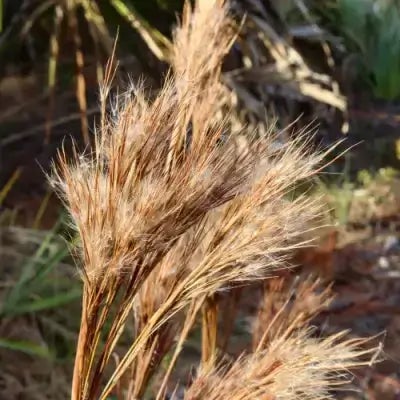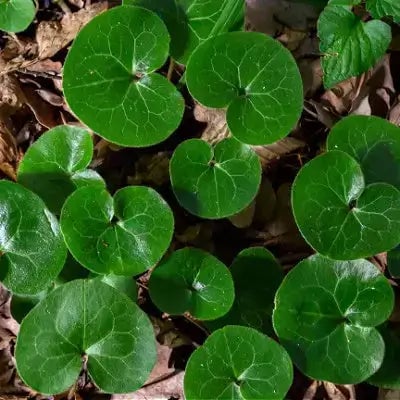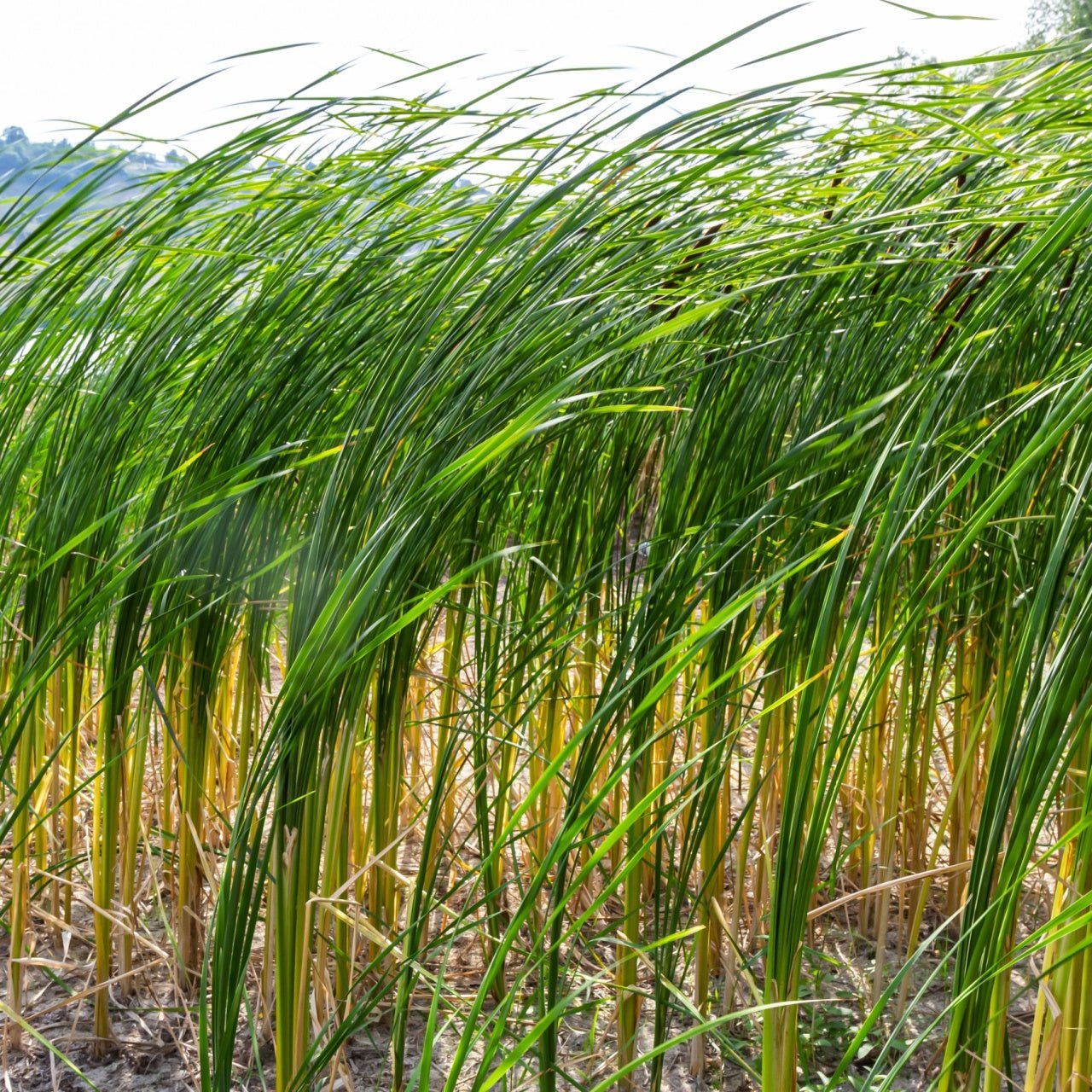River oats, scientifically known as Chasmanthium latifolium, are a graceful and versatile grass species native to North America. Also referred to as inland sea oats, Indian wood oats, or wild oats, this perennial plant belongs to Poaceae, commonly known as the grass family. River oats uniquely charm landscapes and ecosystems across their range with their elegant, drooping seed heads and preference for moist, shady environments.

Botanical Characteristics Of River Oats
River oats typically grow in clumps, reaching 2 to 4 feet tall. Its stems are slender and arching, bearing elongated, lance-shaped leaves that alternate along the stem. The leaves are broad, typically 3 to 6 inches long. They have a distinctive bluish-green hue, adding to the plant's visual appeal.
One of the most striking features of river oats is its seed heads, which appear in delinquent summer and continue into the fall and winter months. These seed heads consist of numerous flat, oat-like spikelets that hang delicately from thin, wiry branches, swaying gently in the breeze. Initially green, the seed heads gradually transition to a soft, golden brown as they mature, creating a warm and inviting aesthetic.
Habitat and Distribution Of River Oats
River oats are a fascinating plant species in the eastern United States. Their range extends from Texas and Oklahoma in the south to Minnesota and Wisconsin in the north, with populations also found along the Atlantic coast. These plants are positively versatile and can thrive in a wide range of ecosystems within this range, including woodlands, floodplains, stream banks, and roadside ditches.
River oats are known for their distinctive appearance, which includes long, slender leaves and oat-like seed heads that turn bronze in the fall. They grow best in moist and fertile soils and are particularly well-suited to partially shaded or shaded environments. This is due to their ability to efficiently photosynthesize in low-light conditions, making them an excellent choice for woodland gardens and naturalistic landscapes.
One of the most exciting things about river oats is their role in supporting local wildlife. The plant's seeds are an essential food source for various birds and small mammals, including goldfinches, sparrows, and chipmunks. The plant's structure also provides a valuable habitat for many insect species.
Overall, river oats are an excellent addition to any garden or landscape. They are easy to care for, highly adaptable, and provide significant ecological benefits to the local ecosystem.
Ecological Significance Of River Oats

As a native grass species, river oats support biodiversity and ecosystem health. Their dense clumps provide valuable habitat and shelter for wildlife, small mammals, and insects. Many bird types, such as sparrows and finches, rely on the seeds of river oats as a food source during the winter months, helping to sustain them through periods of scarcity.
In addition to their ecological importance, river oats contribute to soil stabilization and erosion control, particularly in riparian areas and along stream banks. These grasses' extensive root systems help secure soil particles together, decreasing corrosion risk caused by water runoff and flooding. This makes them valuable components of riparian buffer zones and restoration projects aimed at preserving water quality and protecting sensitive aquatic habitats.
Horticultural Uses Of River Oats
River oats are prized for their ornamental value and are commonly cultivated for landscaping and garden design. Their graceful form, attractive seed heads, and shade tolerance make them an excellent choice for adding texture and visual interest to woodland gardens, shaded borders, and naturalistic landscapes. They also work well in mixed perennial plantings, where they can complement a variety of flowering species and provide contrast with their fine-textured foliage.
In addition to their aesthetic appeal, river oats are relatively low-maintenance plants, requiring minimal care once established. They are flexible to diverse soil types, including clay, loam, and sand, and are tolerant of occasional drought once well-established. However, they perform best in consistently moist soils and will help from frequent watering during dry periods, especially in warmer climates.
Cultivation and Propagation Of River Oats
River oats can be propagated easily from seeds, which can be collected from mature seed heads during the fall season. You can sow the grains straight into the prepared soil, start them indoors in containers a few weeks before the last frost date, and then shift them outdoors once the seedlings have developed robust root systems. If you decide to plant the grains directly outdoors, it is suggested that you scarify or stratify them to enhance germination rates. The hard seed coat can sometimes hinder sprouting, so this method can help overcome that issue.
Regarding cultivation, river oats prefer partial to full shade and moist, well-drained soils. They could be more fussy about soil pH, although they perform best in slightly acidic to neutral soils. It is essential to provide adequate spacing between plants to allow air circulation and control overcrowding, which can increase susceptibility to fungal diseases.
Maintenance and Care Of River Oats

Once river oats are established, they are relatively low maintenance. To ensure optimal growth, occasional watering during dry spells is recommended, and it is advisable to fertilize them yearly with a balanced, slow-release fertilizer. This fertilizer promotes healthy growth and provides the necessary nutrients for the plants to thrive.
River oats are generally relatively resistant to pests and illnesses, which makes them an ideal choice for gardeners who prefer low-maintenance plants. However, they may be susceptible to rust fungus in humid conditions. If you live in a humid climate, it is essential to keep an eye out for any signs of rust fungus and take precautions to minimize its spread. To reduce the risk of disease, avoiding overhead watering, which can increase humidity levels and provide good air circulation around the plants, is advisable.
By following these easy steps, you can appreciate healthy, low-maintenance river oats that provide visual interest and texture to your garden or landscape.
Regarding pruning, river oats can be cut back to the ground in late winter or early spring to encourage fresh growth and remove any dead or damaged foliage. However, it is essential to leave some foliage intact to protect the plant's crown and provide a habitat for overwintering wildlife. The division may be necessary every few years to rejuvenate crowded clumps and maintain plant vigor.
In conclusion, river oats are a charming and versatile grass species with ecological and horticultural significance. From their graceful form and attractive seed heads to their valuable role in supporting wildlife and stabilizing soil, these native grasses enrich and enhance various landscapes and ecosystems. Whether planted in woodland gardens, riparian buffers, or naturalistic landscapes, river oats bring beauty and tranquility wherever they grow, reminding us of the inherent value of native plants in our shared environment.
Read more

Broom sedge, scientifically known as Andropogon virginicus, is a perennial grass native to North America, particularly prevalent in the southeastern United States. Also referred to as broomsedge bl...

European ginger, scientifically known as Asarum europaeum, is a perennial herbaceous plant that thrives in the shaded woodlands and moist soils of Europe. Renowned for its ornamental foliage and me...
Family Owned and run with pride
Nestled in the heart of Middle Tennessee, TN Nursery is a proud family-owned business rooted in tradition, quality, and a deep love for plants. For generations, we’ve been dedicated to providing exceptional service and building lasting personal connections with gardeners, landscapers, and nature enthusiasts across the country. Our mission is to make planting and gardening more accessible, enjoyable, and rewarding—whether you’re a seasoned horticulturist or just starting your first flower bed.
We specialize in expertly grown native plants, perennials, shrubs, trees, and ferns that thrive in a variety of climates. Every plant we offer is carefully nurtured on our farm to ensure strong root systems, healthy growth, and long-term success in your landscape. From vibrant evergreens to colorful blooms and ground covers, we offer an expansive selection to help you create the outdoor space of your dreams.
At TN Nursery, we believe in more than just selling plants—we’re here to help you transform your garden into a place of beauty, sustainability, and joy. Our knowledgeable team is always available to answer questions, offer guidance, and share tips to ensure your planting experience is a success. Join our growing family of happy customers and let us help you bring your garden vision to life.




